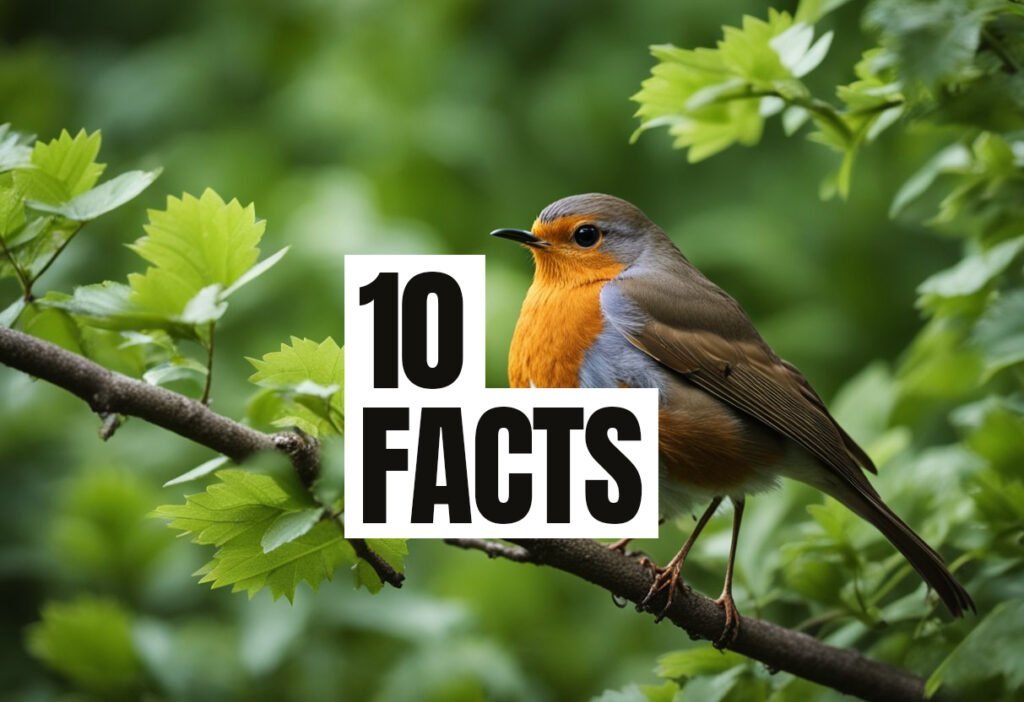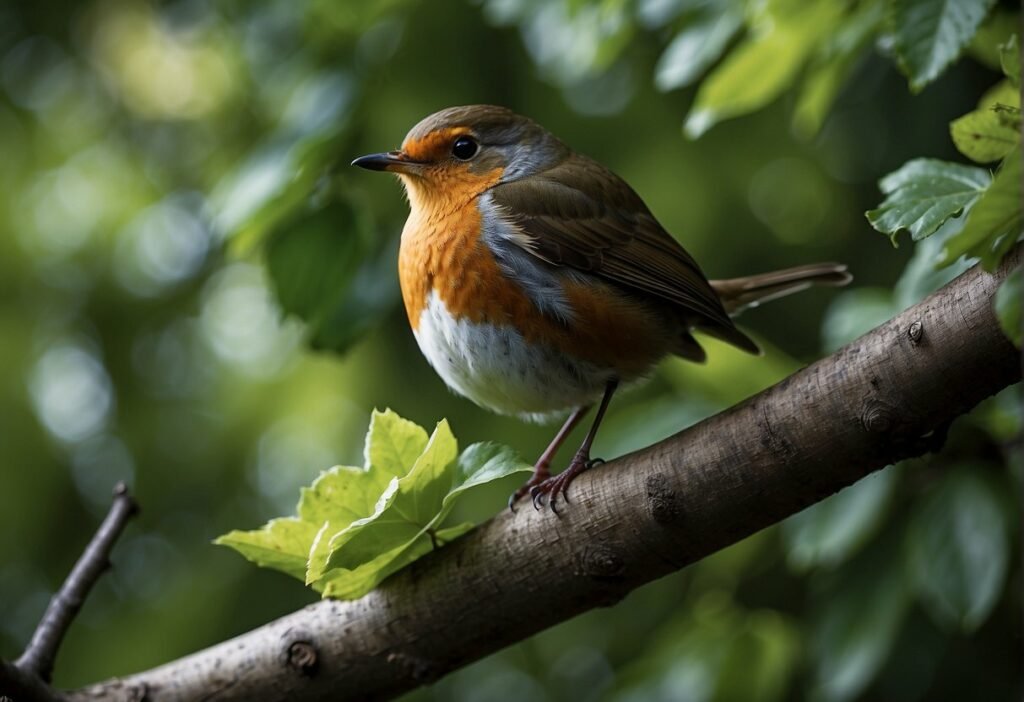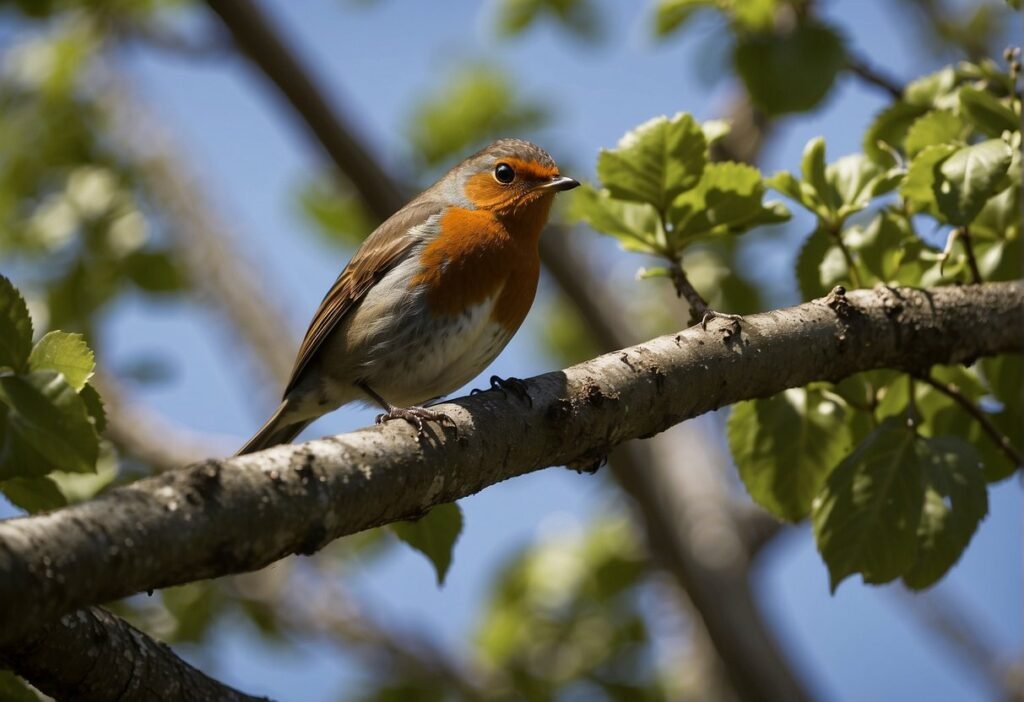Robins are a common sight in many parts of the world, particularly in North America and Europe. These small birds are known for their red breasts and cheerful songs, but they are also known for their ability to survive in cold weather. While many birds migrate to warmer climates during the winter months, robins are able to stay in their habitats year-round. So, how do robins deal with cold weather?

One of the ways that robins are able to survive in cold weather is by changing their diet. During the warmer months, robins primarily eat insects and worms. However, as the weather gets colder and these food sources become scarce, robins switch to a diet of berries and fruits. This allows them to maintain their energy levels and stay warm during the winter months. Additionally, robins have been known to store food in preparation for the winter, much like squirrels and other animals.
Robins’ Adaptations to Cold Weather
Physical Adaptations
Robins have several physical adaptations that enable them to survive in cold weather. Their feathers provide insulation, with down feathers closest to their body and longer feathers on the outside. Robins also have a layer of fat under their skin which helps to keep them warm. Additionally, they can regulate their body temperature by fluffing their feathers to trap warm air close to their body or by tucking their beak under their wing to reduce heat loss.
Behavioral Strategies
Robins use a variety of behavioral strategies to cope with cold weather. They may form flocks and roost together to share body heat. In extreme cold, they may huddle together in a tight group. Some robins migrate to warmer climates, while others may become nomadic, moving to areas with more abundant food sources.
Dietary Adjustments
In the winter, robins must adjust their diet as their usual food sources of insects become scarce. They may switch to eating fruit and berries, which are high in sugar and provide energy to help them survive the cold. They also need a source of unfrozen water, which can be difficult to find in freezing temperatures.
Overall, robins have a range of adaptations and strategies that enable them to survive in cold weather. By using their physical adaptations, behavioral strategies, and dietary adjustments, they are able to withstand the challenges of winter survival.
Challenges and Responses
Food Scarcity and Foraging
Robins face a significant challenge in finding food during the winter months when the ground is frozen and covered in snow. Their typical food sources, such as insects and worms, are not available. To cope with this challenge, robins will switch to a diet of berries and fruits. They will also visit backyard feeders where they can find kitchen scraps, mealworms, calci worms, suet pellets, cheese, dried fruit, and peanuts.
Shelter and Roosting
In addition to finding food, robins must also find shelter from the harsh winter weather. They will seek out roosting sites in hedgerows and undergrowth, and will even roost in nest boxes and birdhouses. To protect themselves from predators such as cats, robins will also use camouflage to blend in with their surroundings.
Predation and Protection
Predators pose a significant threat to robins during the winter months when they are vulnerable and exposed. To protect themselves, robins will seek out shelter in dense bushes and trees. They will also roost in groups to increase their safety in numbers. Additionally, robins have been known to mob predators such as cats, using their numbers to drive them away.
Overall, robins have developed a range of strategies to cope with the challenges of cold weather. By switching their diet, seeking out shelter, and protecting themselves from predators, they are able to survive and thrive even in the harshest of conditions.
Frequently Asked Questions
What adaptations do robins have to survive winter conditions?
Robins have several adaptations that enable them to survive winter conditions. They grow extra feathers to provide insulation and puff up their feathers to trap warm air close to their bodies. They also have a higher metabolic rate in winter, which helps them generate more body heat.
Do robins migrate seasonally, and if so, where do they typically go?
Some robins do migrate seasonally to warmer regions, but many stay in their breeding territories year-round. Those that do migrate typically travel to the southern United States or Mexico.
What dietary changes do robins make to cope with winter scarcity?
Robins are primarily insectivorous, but during the winter months, they switch to a diet of fruits and berries. They also store food in caches to help them survive periods of scarcity.
At what temperatures do robins experience distress or danger from the cold?
Robins can tolerate cold temperatures down to around -20°C, but they may experience distress or danger from the cold if temperatures drop below this threshold. In extreme cold, they may huddle together to conserve body heat.
How do robins maintain their body heat during frigid nights?
Robins maintain their body heat during frigid nights by fluffing up their feathers to trap warm air close to their bodies. They may also huddle together with other birds for added warmth.
Is supplementary feeding beneficial for robins during the winter months?
Supplementary feeding can be beneficial for robins during the winter months, especially if food sources are scarce. Offering fruits, berries, and mealworms can help robins survive periods of cold and food scarcity. However, it is important to avoid overfeeding and to provide food in a safe and hygienic manner.




